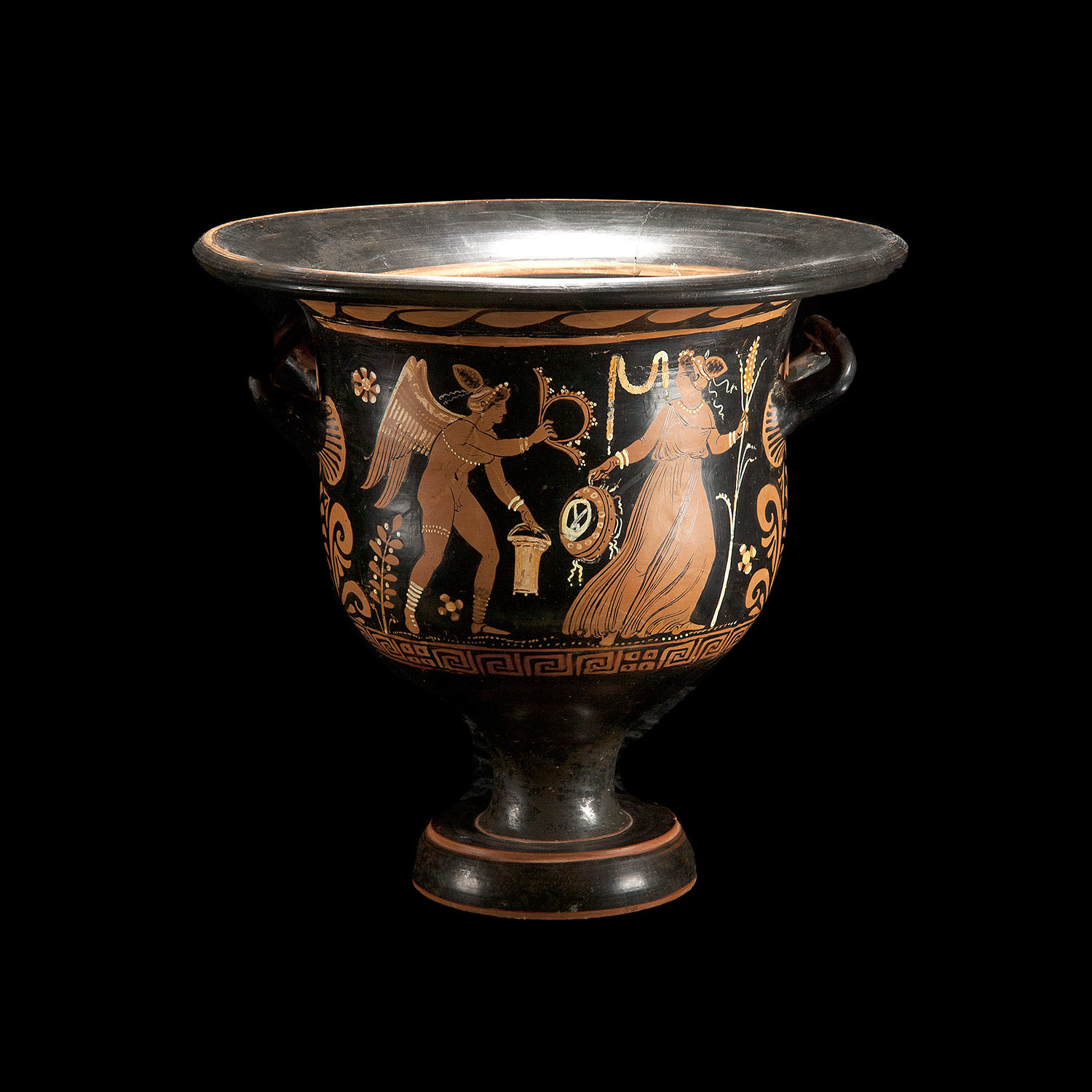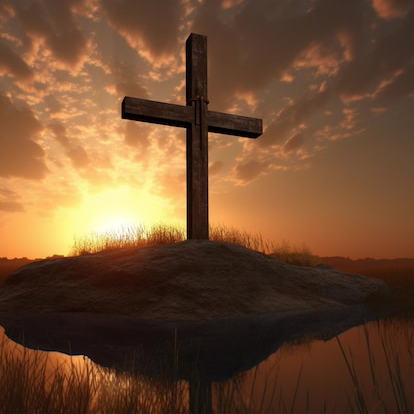Navigation
Install the app
How to install the app on iOS
Follow along with the video below to see how to install our site as a web app on your home screen.
Note: This feature may not be available in some browsers.
More options
Style variation

-

-

-

-

-

Desire to be a vessel of honor unto the Lord Jesus Christ?
Join Hidden in Him and For His Glory for discussions on how
https://christianforums.net/threads/become-a-vessel-of-honor-part-2.112306/
-

-

-

-
Focus on the Family
Strengthening families through biblical principles.
Focus on the Family addresses the use of biblical principles in parenting and marriage to strengthen the family.
Read daily articles from Focus on the Family in the Marriage and Parenting Resources forum.
You are using an out of date browser. It may not display this or other websites correctly.
You should upgrade or use an alternative browser.
You should upgrade or use an alternative browser.
The Church Answer Game.
- Thread starter JohnDB
- Start date
JohnDB
Member
- Aug 16, 2015
- 9,065
- 5,725
- Thread starter
- #42
The answer to your questions are in the next big bonus question... So stay tuned. I play requests....and I happen to really like this thought line you have here....you aren't wrong at all. You just need to hear a touch of my research and boy howdy will you be amazed. Just like I was.Not to argue but when I read about when Peter identified Jesus as the Christ, I don't necessarily see Jesus' response regarding the rock as pointing at Peter but rather pointing at what Peter said. In other words, I'm not convinced that when Jesus said "Upon this rock..." that He was speaking of Peter. I sometimes wonder if He was speaking about the knowledge of God. I am not settled on this as others are.
Part of my reason for this is that Jesus didn't say "Upon you Peter, I will build my church." Another reason for my question is that throughout the old testament and even into the new testament there is a common theme that I have noticed and recently I did some digging. In the NKJV I found over 275 references where God affirmed who He was with statements similar to...
"I am the Lord."
"I am the Lord God."
"I am God."
"I am your Shield."
...as well as affirming what He wants from us with statements similar to...
"So you will know that I am the Lord."
"So you will know that I am God."
"So they will know that I am the Lord."
"Know that I am God."
Additionally Hosea 6:6 it is recorded, "For I desire mercy and not sacrifice, and the knowledge of God more than burnt offerings."
And Jesus made reference to this Scripture twice; Matthew 9:13 and again Matthew 12:7.
Just food for thought.
JohnDB
Member
- Aug 16, 2015
- 9,065
- 5,725
- Thread starter
- #43
I've been starting to wonder lately if Jesus was only a carpenter. He may have been a landlord (property owner) too...
A couple things suggest this to me. That He was well off is apparent in that His clothing was top of the line (seamless). He even had His own accountant on staff with them.
That He was a property owner is suggested in Mark 11:1-6 when Jesus tells a couple disciples to go to the house where a donkey colt is tied up out front...and take the colt for His use...if anyone asks what you are doing, tell them the Lord has use for it...
That passage seemed a little odd to me because it almost sounds like they stole the colt, yet He did not steal...
If He was owner of the colt/house, then that would explain it perfectly!
Not quite.
Because of a prophesy about riding on a Colt into Jerusalem many of those who had donkey colts would hang out by the road entrance to Jerusalem just so they could let the Messiah ride their Colt into town. It was considered an honor. Indeed if it was me I definitely would. So when the Apostles went to ask it was a given that they would be successful in obtaining one.
JohnDB
Member
- Aug 16, 2015
- 9,065
- 5,725
- Thread starter
- #44
The BIG ANSWER
OK...This answer isn't exactly found in one particular verse except in Mark 6:8
In all of the synoptic gospels of this story of the "Sending of the 12" we see that no one was to carry anything. They were prohibited from carrying wallets or purses or extra clothing or staffs. Except when we read Mark's account of the sending of the 12 it is a bit different. We see Jesus telling them to wear sandals and clothes(no extra) and to carry a staff. But in all the other accounts they were explicitly told not to take a staff.
Why was this staff so different in Mark's gospel account?
In times past pictures of prophets or leaders was considered a sin. We have no paintings of what any of the Jewish leaders of old looked like. So when on the Mount of Transfiguration how did Peter recognize any of those who were there? By the staffs they carried. You recognize Moses' staff today as it is the staff that has the two snakes entwined around it that the medical profession uses. And when someone seen that staff it was the sign of Moses....and how to cure those pesky "snakebites" that had burrowed into their skins. (most translations say that they only had to look upon the staff to be cured but "look" was a double entendre for "consider". )
So...Mark's gospel was written by Mark...Peter's cousin. Who had traveled with Peter as he had recounted all these stories of Jesus over and over again and was encouraged by the Apostolic lead (I'm forgetting which one...Justin Martyr? or Ireneous?) to write these stories down.
So Peter would include that he often preferred to go barefoot and that he was to carry a staff....signifying that he was to be the Apostolic Leader in the future.
So in this case...it is the dis-harmony of the Gospels that proves that Peter was the Apostolic lead shortly after getting a new name and being called an Apostle.
OK...This answer isn't exactly found in one particular verse except in Mark 6:8
In all of the synoptic gospels of this story of the "Sending of the 12" we see that no one was to carry anything. They were prohibited from carrying wallets or purses or extra clothing or staffs. Except when we read Mark's account of the sending of the 12 it is a bit different. We see Jesus telling them to wear sandals and clothes(no extra) and to carry a staff. But in all the other accounts they were explicitly told not to take a staff.
Why was this staff so different in Mark's gospel account?
In times past pictures of prophets or leaders was considered a sin. We have no paintings of what any of the Jewish leaders of old looked like. So when on the Mount of Transfiguration how did Peter recognize any of those who were there? By the staffs they carried. You recognize Moses' staff today as it is the staff that has the two snakes entwined around it that the medical profession uses. And when someone seen that staff it was the sign of Moses....and how to cure those pesky "snakebites" that had burrowed into their skins. (most translations say that they only had to look upon the staff to be cured but "look" was a double entendre for "consider". )
So...Mark's gospel was written by Mark...Peter's cousin. Who had traveled with Peter as he had recounted all these stories of Jesus over and over again and was encouraged by the Apostolic lead (I'm forgetting which one...Justin Martyr? or Ireneous?) to write these stories down.
So Peter would include that he often preferred to go barefoot and that he was to carry a staff....signifying that he was to be the Apostolic Leader in the future.
So in this case...it is the dis-harmony of the Gospels that proves that Peter was the Apostolic lead shortly after getting a new name and being called an Apostle.
smaller
Member
- Oct 23, 2003
- 12,380
- 664
So Peter would include that he often preferred to go barefoot and that he was to carry a staff....signifying that he was to be the Apostolic Leader in the future.
So in this case...it is the dis-harmony of the Gospels that proves that Peter was the Apostolic lead shortly after getting a new name and being called an Apostle.
That's a pretty big leap there John. Disharmony is far more interesting than that. It's Divinely Intentional, and NOT to prove that any flesh man is greater than another. Particularly not so in Peter's case.
I think Peter acknowledged Paul's superior complexity and depth of understandings, here:
2 Peter 3:16
As also in all his epistles, speaking in them of these things; in which are some things hard to be understood, which they that are unlearned and unstable wrest, as they do also the other scriptures, unto their own destruction.
JohnDB
Member
- Aug 16, 2015
- 9,065
- 5,725
- Thread starter
- #46
Acts 9:15That's a pretty big leap there John. Disharmony is far more interesting than that. It's Divinely Intentional, and NOT to prove that any flesh man is greater than another. Particularly not so in Peter's case.
I think Peter acknowledged Paul's superior complexity and depth of understandings, here:
2 Peter 3:16
As also in all his epistles, speaking in them of these things; in which are some things hard to be understood, which they that are unlearned and unstable wrest, as they do also the other scriptures, unto their own destruction.
Romans 1:5
Romans 11:13
Galatians 1:16
Galatians 2:7
JohnDB
Member
- Aug 16, 2015
- 9,065
- 5,725
- Thread starter
- #47
So now for the Big BIG BONUS question.
WIP hinted around at it and I explained when and where Peter was named Apostolic Leader. (With a side excursion into explaining that Paul was the Apostle to the Gentiles.)
Soooo.
What exactly was being said in Caesarea Phillipi?
What was the rock that was going to get them keys?
Location location location (hint)
WIP hinted around at it and I explained when and where Peter was named Apostolic Leader. (With a side excursion into explaining that Paul was the Apostle to the Gentiles.)
Soooo.
What exactly was being said in Caesarea Phillipi?
What was the rock that was going to get them keys?
Location location location (hint)
J
jocor
Guest
OK.
Exactly where and in which translation exactly does it say that Jesus was a carpenter? (Hint compare translations)
Isa 44:13 The carpenter stretcheth out his rule; he marketh it out with a line; he fitteth it with planes, and he marketh it out with the compass, and maketh it after the figure of a man, according to the beauty of a man; that it may remain in the house.
Isa 44:14 He heweth him down cedars, and taketh the cypress and the oak, which he strengtheneth for himself among the trees of the forest: he planteth an ash, and the rain doth nourish it.
The Septuagint has "tekton" for "carpenter". The context of this verse suggests a craftsmen who works with wood. Joseph was a "tekton" as well.Isa 44:14 He heweth him down cedars, and taketh the cypress and the oak, which he strengtheneth for himself among the trees of the forest: he planteth an ash, and the rain doth nourish it.
J
jocor
Guest
Consider John Gill's commentary on the difference between Mark and Matthew's accounts:The BIG ANSWER
OK...This answer isn't exactly found in one particular verse except in Mark 6:8
In all of the synoptic gospels of this story of the "Sending of the 12" we see that no one was to carry anything. They were prohibited from carrying wallets or purses or extra clothing or staffs. Except when we read Mark's account of the sending of the 12 it is a bit different. We see Jesus telling them to wear sandals and clothes(no extra) and to carry a staff. But in all the other accounts they were explicitly told not to take a staff.
Why was this staff so different in Mark's gospel account?
In times past pictures of prophets or leaders was considered a sin. We have no paintings of what any of the Jewish leaders of old looked like. So when on the Mount of Transfiguration how did Peter recognize any of those who were there? By the staffs they carried. You recognize Moses' staff today as it is the staff that has the two snakes entwined around it that the medical profession uses. And when someone seen that staff it was the sign of Moses....and how to cure those pesky "snakebites" that had burrowed into their skins. (most translations say that they only had to look upon the staff to be cured but "look" was a double entendre for "consider". )
So...Mark's gospel was written by Mark...Peter's cousin. Who had traveled with Peter as he had recounted all these stories of Jesus over and over again and was encouraged by the Apostolic lead (I'm forgetting which one...Justin Martyr? or Ireneous?) to write these stories down.
So Peter would include that he often preferred to go barefoot and that he was to carry a staff....signifying that he was to be the Apostolic Leader in the future.
So in this case...it is the dis-harmony of the Gospels that proves that Peter was the Apostolic lead shortly after getting a new name and being called an Apostle.
"nor yet with staves: that is, with more than one staff, which was sufficient to assist them, and lean upon in journeying: for, according to Mark, one was allowed; as though they might take a travelling staff, yet not staves for defence, or to fight with; see Mat 26:55."
JohnDB
Member
- Aug 16, 2015
- 9,065
- 5,725
- Thread starter
- #50
This passage in Isaiah is about those who make idols and idolators.Isa 44:13 The carpenter stretcheth out his rule; he marketh it out with a line; he fitteth it with planes, and he marketh it out with the compass, and maketh it after the figure of a man, according to the beauty of a man; that it may remain in the house.The Septuagint has "tekton" for "carpenter". The context of this verse suggests a craftsmen who works with wood. Joseph was a "tekton" as well.
Isa 44:14 He heweth him down cedars, and taketh the cypress and the oak, which he strengtheneth for himself among the trees of the forest: he planteth an ash, and the rain doth nourish it.
Jesus didn't do that.
So you have a gratuitous assertion. (That has been refuted with logic) Which another person has done great research to prove your assertion and then came to the same conclusion that I have asserted.
JohnDB
Member
- Aug 16, 2015
- 9,065
- 5,725
- Thread starter
- #51
But that would not agree with the other Gospels of Luke or Matthew. They say that Jesus explicitly said to NOT carry a staff. But Mark explicitly says for Peter to carry a staff.Consider John Gill's commentary on the difference between Mark and Matthew's accounts:
"nor yet with staves: that is, with more than one staff, which was sufficient to assist them, and lean upon in journeying: for, according to Mark, one was allowed; as though they might take a travelling staff, yet not staves for defence, or to fight with; see Mat 26:55."
Last edited:
smaller
Member
- Oct 23, 2003
- 12,380
- 664
I would agree that Jesus is a woodworker, after a fashion. Men are allegorized as trees in the scripture.Isa 44:13 The carpenter stretcheth out his rule; he marketh it out with a line; he fitteth it with planes, and he marketh it out with the compass, and maketh it after the figure of a man, according to the beauty of a man; that it may remain in the house.The Septuagint has "tekton" for "carpenter". The context of this verse suggests a craftsmen who works with wood. Joseph was a "tekton" as well.
Isa 44:14 He heweth him down cedars, and taketh the cypress and the oak, which he strengtheneth for himself among the trees of the forest: he planteth an ash, and the rain doth nourish it.
Isaiah 61:3
To appoint unto them that mourn in Zion, to give unto them beauty for ashes, the oil of joy for mourning, the garment of praise for the spirit of heaviness; that they might be called trees of righteousness, the planting of the Lord, that he might be glorified.
smaller
Member
- Oct 23, 2003
- 12,380
- 664
But that would not agree with the other Gospels of Luke or Matthew. They say that Jesus explicitly said to NOT carry a staff. But Mark explicitly says for Peter to carry a staff.
btw I wasn't purposefully trying to be disagreeable with the whole Peter thing. It's just that a certain group landed there quite entirely in error, which I DON'T see or concede to, for obvious reasons, because they are just flat out wrong.
J
jocor
Guest
Matthew and Luke both use the plural "staves". Gill's commentary seems to harmonize the three Gospel accounts.But that would not agree with the other Gospels of Luke or Matthew. They say that Jesus explicitly said to NOT carry a staff. But Mark explicitly says for Peter to carry a staff.
J
jocor
Guest
There are woodworkers who work unrighteousness and woodworkers who work righteousness.This passage in Isaiah is about those who make idols and idolators.
Jesus didn't do that.
So you have a gratuitous assertion. (That has been refuted with logic) Which another person has done great research to prove your assertion and then came to the same conclusion that I have asserted.
Joseph was the latter.
Also, I did not say "Jesus was a tekton", but that Joseph was.
JohnDB
Member
- Aug 16, 2015
- 9,065
- 5,725
- Thread starter
- #56
So how then did Peter recognize Elijah and Moses on the Mount of Transfiguration?Matthew and Luke both use the plural "staves". Gill's commentary seems to harmonize the three Gospel accounts.
Does Gill have an explanation for that since photography wasn't invented yet and portraits were sinful...ie illegal?
I know... Because it's me it just has to be wrong huh?
smaller
Member
- Oct 23, 2003
- 12,380
- 664
So now for the Big BIG BONUS question.
WIP hinted around at it and I explained when and where Peter was named Apostolic Leader. (With a side excursion into explaining that Paul was the Apostle to the Gentiles.)
Soooo.
What exactly was being said in Caesarea Phillipi?
What was the rock that was going to get them keys?
Location location location (hint)
IF you were an allegory fan, as I am, you would also see why it was said as they were coming into the coasts of Caesarea Phillipi.
Scripture defines man in the flesh and the ruler of the flesh as a relationship between a horse and it's rider.
Caesarea Phillipi literally translates as "severed horses."
The coast is also filled with allegorical meaning, between water and sand. We are taken OUT of the seas of confusion and placed on dry ground, in faith. BOTH of these are directly IN LINE with what happened in the account itself via allegory way, the language of God Himself.
But, this is more for the esoterically minded.
As to the account you are referring to there was no physical rock, no physical key and no physical enemy in the account. YET they were all present. Fixating on the physical doesn't always get us to the heart of the matters.
smaller
Member
- Oct 23, 2003
- 12,380
- 664
There are woodworkers who work unrighteousness and woodworkers who work righteousness.
Joseph was the latter.
Also, I did not say "Jesus was a tekton", but that Joseph was.
Jesus is described more ways than any of us can really account for. No?
JohnDB
Member
- Aug 16, 2015
- 9,065
- 5,725
- Thread starter
- #59
Ummmm. You really don't know where Caesarea Phillipi is do you?IF you were an allegory fan, as I am, you would also see why it was said as they were coming into the coasts of Caesarea Phillipi.
Scripture defines man in the flesh and the ruler of the flesh as a relationship between a horse and it's rider.
Caesarea Phillipi literally translates as "severed horses."
The coast is also filled with allegorical meaning, between water and sand. We are taken OUT of the seas of confusion and placed on dry ground, in faith. BOTH of these are directly IN LINE with what happened in the account itself via allegory way, the language of God Himself.
But, this is more for the esoterically minded.
As to the account you are referring to there was no physical rock, no physical key and no physical enemy in the account. YET they were all present. Fixating on the physical doesn't always get us to the heart of the matters.
It's at the base of Mount Hermon where one of the three springs that feed the Jordan River before it flows into the Sea of Galilee. No where near either sea or Ocean.
Caesarea Phillipi is the named that because Phillip renovated the city and named it after Caesar. Since Phillip was the second one to rename a town after Caesar Phillip's name was tacked on the end.
smaller
Member
- Oct 23, 2003
- 12,380
- 664
So how then did Peter recognize Elijah and Moses on the Mount of Transfiguration?
Does Gill have an explanation for that since photography wasn't invented yet and portraits were sinful...ie illegal?
I know... Because it's me it just has to be wrong huh?
I might suggest that the men heard them talking, and that talking WAS scripture. That's how they recognized them.
Mark 9:4
And there appeared unto them Elias with Moses: and they were talking with Jesus.
I'd like to think they maybe said who are these idiots, but I think the likely hood was that it was a scriptural discussion, easily recognized by those men and they also instantly made that connection or at least made that connection at some point in the event and recorded it later without having to point out the obvious as to "how." Nothing too mysterious about it. A little spooky perhaps.